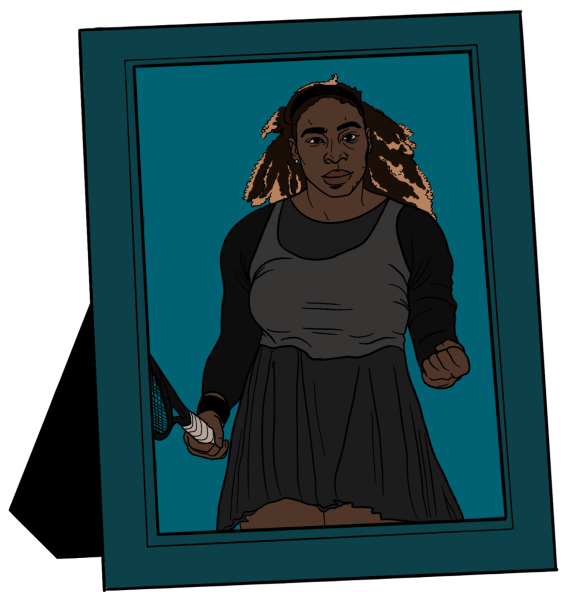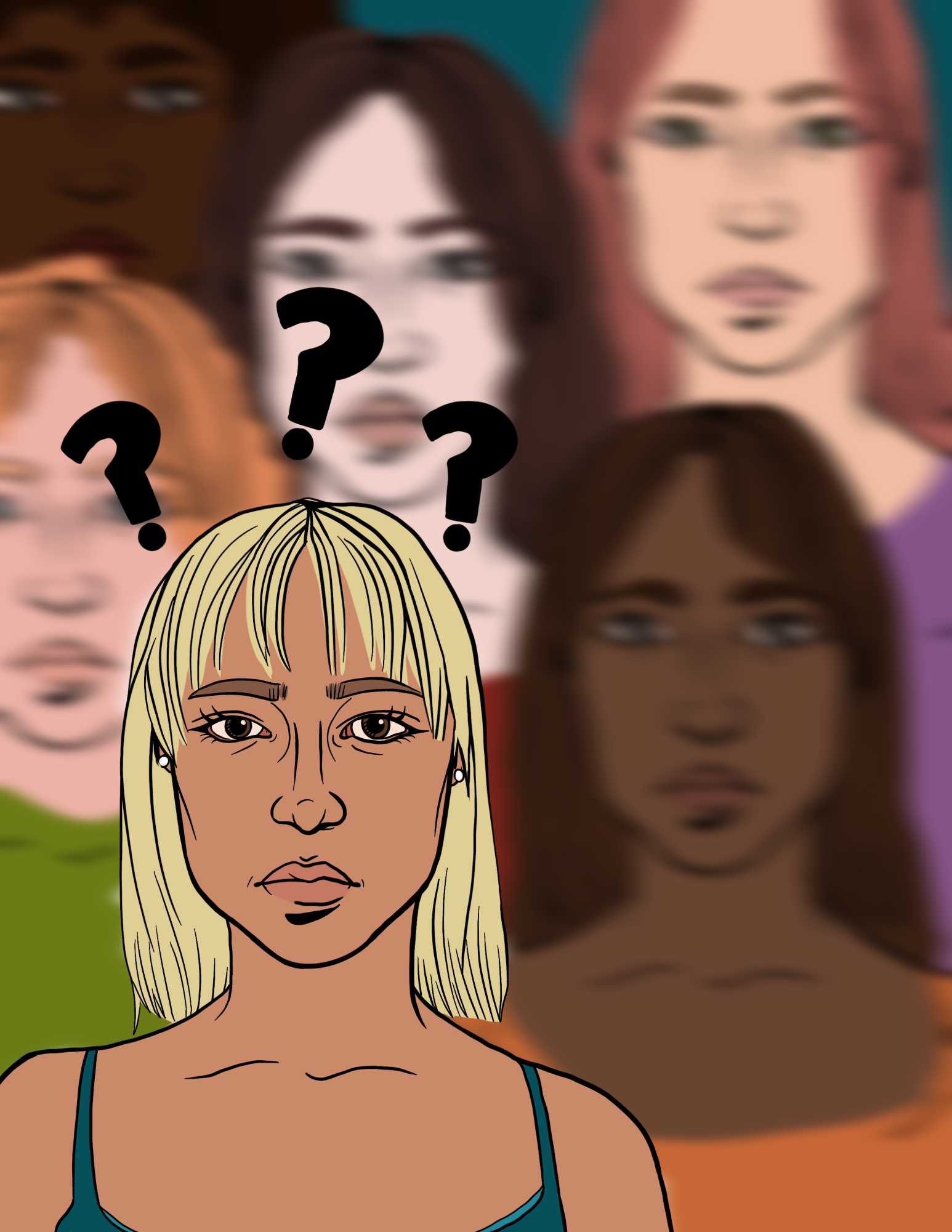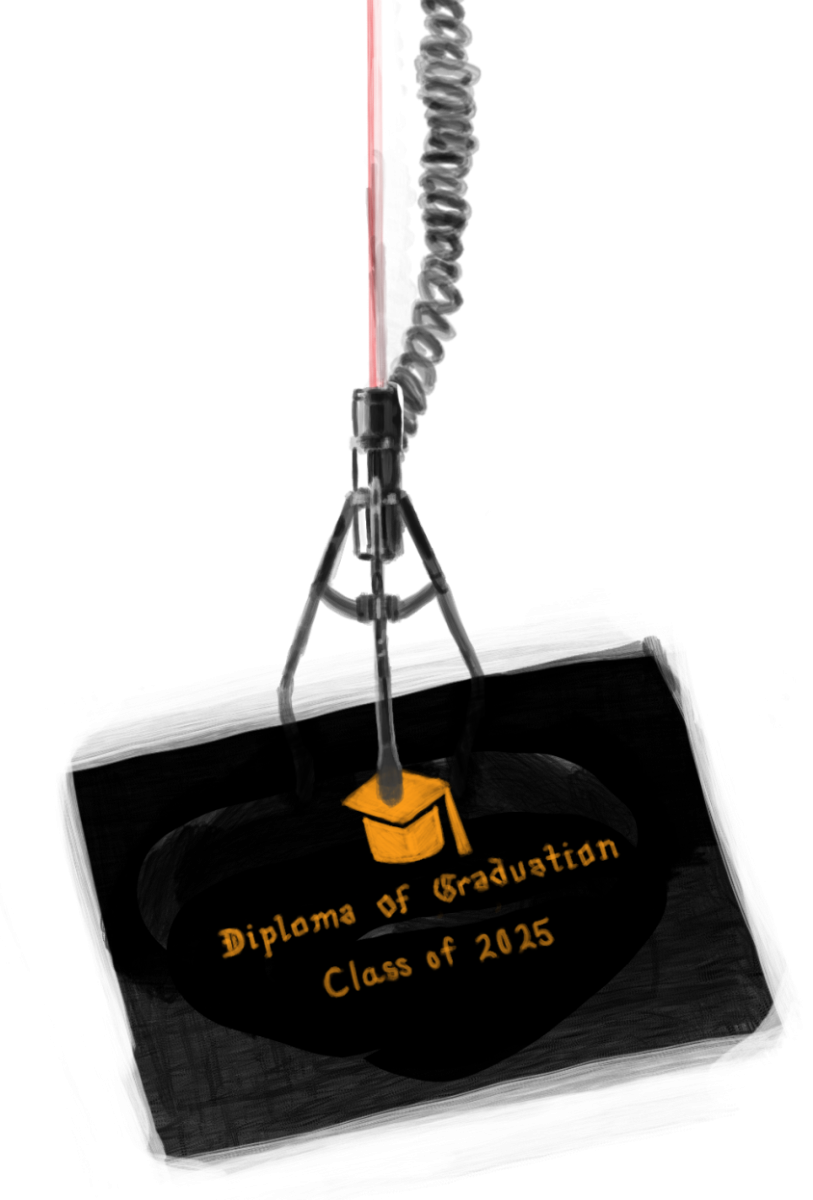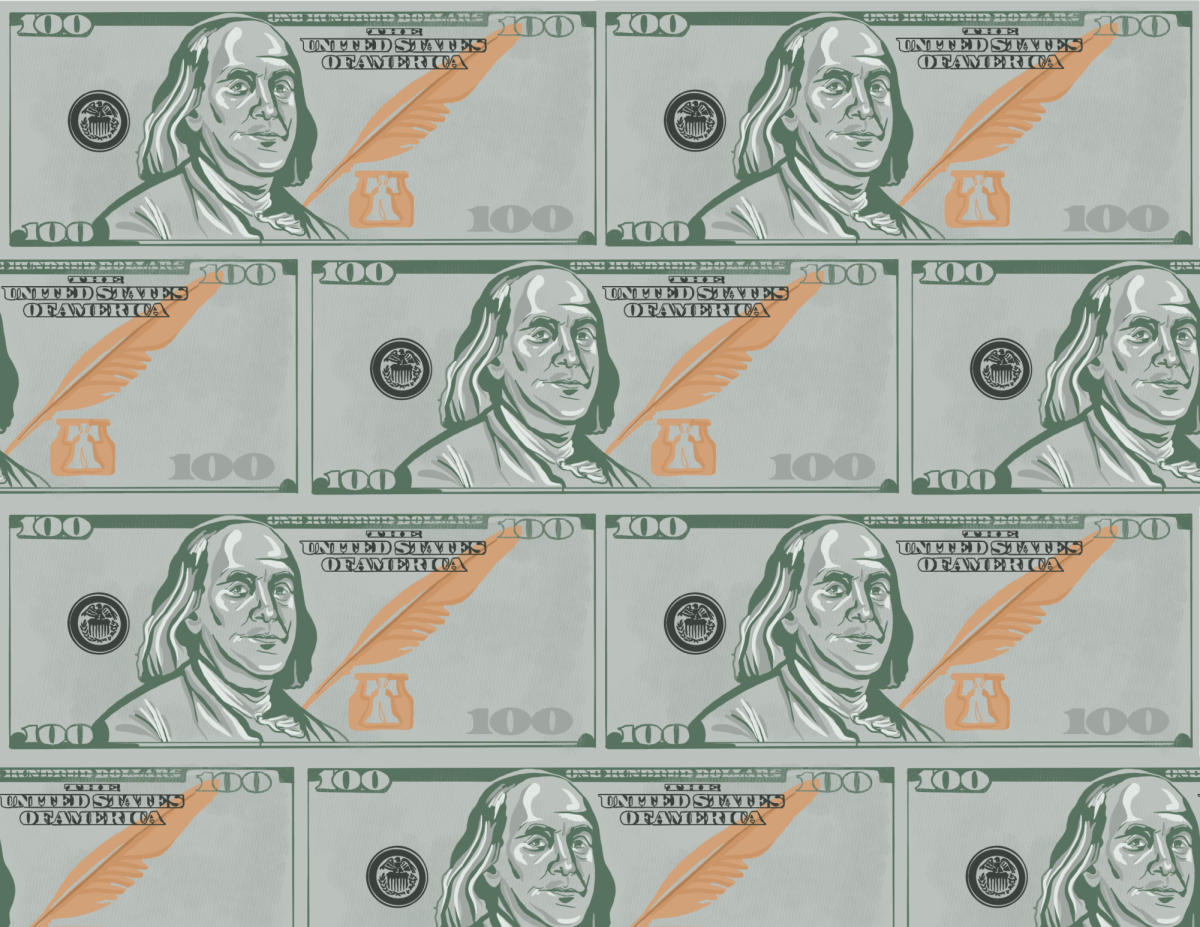The recent release of the movie “Barbie” on July 21, 2023, has had the topic of feminism circling the media, bringing with it criticism, praise, and confusion. Despite the controversy sparked by the movie, its intentions were clear: to make people talk about feminism. And they are. But, in order to truly understand the controversy behind feminism, one must first determine what feminism is.
Contrary to popular belief, feminism is not the belief that women are superior to men, or even that women deserve more rights than men. At the end of the day, feminism is the idea that women are equal to men and deserving of the same fundamental rights. Or, as defined by the Oxford Dictionary, “the advocacy of women’s rights on the basis of the equality of the sexes.”
In America, it can easily be argued that women have the same rights as men. However, the history of women’s rights in America is a long, laborious one. It wasn’t until the past hundred or so years that a woman was seen as an equal to a man in legal terms. In fact, many women’s rights advances in America did not occur until the 20th century.
Here is a condensed timeline of women’s rights accomplishments in the past 100 or so years:

April 2, 1917: Jeannette Rankin of Montana was sworn in as the first woman elected to Congress as a member of the House of Representatives.
Aug. 18, 1920: The 19th Amendment to the U.S. Constitution declared “the right of citizens of the United States to vote shall not be denied or abridged by the United States or by any State on account of sex.”
May 9, 1960: The Food and Drug Administration (FDA) approved the first commercially produced birth control pill in the world, allowing women to decide whether or not they want children.
June 10, 1963: President John F. Kennedy signed into law the Equal Pay Act, prohibiting sex-based wage discrimination between men and women performing the same job in the same workplace.
July 2, 1964: President Lyndon B. Johnson signed the Civil Rights Act into law; Title VII bans employment discrimination based on race, religion, national origin or sex.
June 23, 1972: Title IX of the Education Amendments was signed into law by President Richard Nixon.
Jan. 22, 1973: The U.S. Supreme Court declared that the Constitution protects a woman’s legal right to an abortion in landmark case Roe v. Wade. This was overturned in Dobbs v. Jackson Women’s Health Organization
July 7, 1981: Sandra Day O’Connor was sworn in by President Ronald Reagan as the first woman to serve on the U.S. Supreme Court.
July 12, 1984: Democratic presidential nominee Walter Mondale named U.S. Rep. Geraldine Ferraro (N.Y.) as his running mate, making her the first woman vice president nominee by a major party.
Jan. 4, 2007: U.S. Rep. Nancy Pelosi (D-Calif.) became the first female speaker of the House. In 2019, she reclaimed the title, becoming the first lawmaker to hold the office two times in more than 50 years.
Jan. 24, 2013: The U.S. military removed a ban against women serving in combat positions.
July 26, 2016: Hillary Clinton became the first woman to receive a presidential nomination from a major political party.
January 20, 2021: Kamala Harris was sworn in as the first woman vice president of the United States.
Despite these monumental steps forward for women, gender inequality has not yet been eradicated, and continues to endanger and otherwise harm women in society on a daily basis. A common aspect of gender inequality is gender disparity: the differences in women’s and men’s access to resources, status, and well-being. This concept can be found throughout the world and even within the doors of Upper Arlington High School.
STIGMAS AND STEREOTYPES
Modern adolescents grow up in an environment saturated with media; from TV to social media, overall screen use among adolescents is rapidly increasing as technology advances. This media has an incredible ability to impact adolescents’ outlooks and perceptions of the world.
This includes gender, and how boys and girls are “supposed” to look, think, and behave.
Media that perpetuates rigid gender roles and stereotypes can affect children’s sense of self, relationships, and career aspirations. These forms of media are often associated with poor mental health and low self-esteem.
“I feel like [women] are seen more as like, very dramatic and very emotional. And I feel like if they go against that stereotype, they’re seen as cold and mean,” senior Alyssa Mendoza said. “And to me, I feel like I have to act a certain way in public for me to be considered normal, calm and like somebody that can be talked to.”
The portrayal of women in media has led to a perpetuation of stereotypes in terms of how women are “supposed” to act or otherwise be perceived in society. Not only are these stereotypes unfair, they often portray women in a negative light. Despite this, there are certain things that are expected of women, ranging from how they act, talk, or look.
“Women aren’t necessarily allowed to express emotions that don’t align with how society believes they should act,” senior Liz Saint-Jacques said. “And it’s like you’re invalidating your own emotions because you assume that someone’s not going to take you seriously because you’re reacting in a way that a person should be allowed to react to a situation.”
These perceptions of how a woman is supposed to act comes with a series of double standards pertaining to how men are supposed to act as well.
“You’re either cold or you’re over dramatic and aggressive, but then like a guy would just be competent, or able to take charge and it feels like there’s just a big double standard of how you’re allowed to respond to situations,” Saint-Jacques said.
This perpetuation of stereotypes has adverse effects on all affected parties, however, teenage girls have reported increased anxiety, depression, and even suicidal thoughts regarding their experience on social media, as compared to their male counterparts.
A study conducted by eClinicalMedicine found that the magnitude of association between social media use and depressive symptoms was larger for girls than for boys. Greater social media use is related to online harassment, poor sleep, low self-esteem, and poor body image; in turn these are related to higher depressive symptoms.
For many, these symptoms come from being unable to uphold the unattainable expectations of teenage girls in society.
“It’s detrimental to your mental health because you always feel like you need to compare yourself to others, and sometimes you just get to that point where you don’t know who you are anymore,” Mendoza said.
Additionally, there are harsh and equally unattainable beauty standards expected to be upheld by women in society, many of which are, realistically speaking, impossible to achieve.
“It’s also more than just your personality, it’s about your appearance as well. You have to look clean and always have a good posture, like the way that you carry yourself, to be seen as feminine,” Mendoza said
This sentiment is shared by Saint-Jacques.
“A woman is just sort of pretty all the time, they’re just existing as something pretty to look at that’s in the background,” she said.
Saint-Jacques emphasized the fact that this perceived need to be “pretty all the time” puts a large amount of pressure on women, and makes it hard to “be your own person.”
“Obviously, I want to look my best, but I shouldn’t always have to look my best,” she added.
Moresoe, the emphasis on a woman’s appearance can cause people to overlook other aspects of their personhood.
“Some people look down on you, in a way, or they see you as more of an object than a person. Men, in a way, they almost look at you like, ‘oh, yeah, she’s hot’ and I’m like, ‘no,’” junior Lyla Beebe said. “That’s not how I want to be seen, I want to be seen as a person and for how my personality is and more than my body.”
PINK TAX

Gender disparity can be found on a global scale as well; the term “pink tax” refers to the tendency for products marketed specifically toward women to be more expensive than those marketed toward men. The pink tax is not an actual tax, but many apparel products designed for women have higher import tariffs than men’s counterparts. Over time, the issue of pink tax has been brought up but rarely has anything been done about it.
Many modern discussions of the pink tax reference a 2015 New York City Department of Consumer Affairs study which found that New York City retailers price women’s products an average of 7% more than similar men’s products
Forbes found that the pink tax dates back to at least the 1990s, when a report from California’s Assembly Office of Research found that 64% of stores in several major cities charged more to wash and dry-clean a woman’s blouse than a man’s button-up shirt.
“Women’s stuff tends to be more expensive from a retail point of view,” Claudia Valachovic, a merchant at Abercrombie & Fitch, said.
The reasons are generally unknown but speculations have been made about the incentive behind pink tax.
“Women’s stuff leans more [towards] fashion and trends, which tends to be where they up-charge,” Valachovic said. “In the fashion trend items for example, they know that people are willing to pay more for it because it’s a status piece.”
Fashion trends have been common for centuries, yet the increase of trends has come with the creation and evolution of social media.
“With the rise of social media and tiktok, there are certain pieces that are like the ‘it’ styles that you can sell for however much you want,” Valachovic said. “That’s much more probably skewed towards girls than guys.”
Pink tax has been around for a while, so it might be surprising that stores have gotten away with it for so long. Whether it’s with devious intentions or an accident, many stores are set up in a certain way that let pink tax fly under the radar of buyers.
“Store spaces, especially in retail, they’re often very gendered. So women’s is on this side and men’s is on this side, and you’re not really stepping into the other space,” Valachovic said. “That probably allows retailers to do things like raise prices on women’s clothes, because you’re so separate from the men’s counterpart you don’t see the comparisons.”
Clothing stores such as Levis and Urban Outfitters are largely considered to be clothing brands most guilty of pink tax. These stores draw in a large demographic of female high schoolers, many of which fall victim to this phenomenon.
Around 70% of the cost of a garment is based on the fabrics used, and there is a wide range of denim products for a store like Levis to choose from. Despite a potential difference in fabrics used for men and women’s jeans, however, the primary difference between men and women’s jeans is the way they fit, meaning there should not be a drastic difference. But there is. On average, Levis charges $20 more for a pair of women’s jeans than a pair of men’s jeans.
“I do go shopping a lot,” sophomore Zoe Stefanec, an avid shopper, said. “It’s one of my favorite hobbies.”
While being in stores and malls frequently, Stefanec has picked up on pricing patterns.
“I would say women’s products are [priced] significantly higher,” she said. “Especially stores that have predominantly men’s products or men’s clothes, the women’s products are more expensive.”
Stefanec isn’t the only girl who’s dealt with pink tax. The problem seems to be here to stay as long as there are trends to interfere with the pricing of clothes. There is a lack of discussion surrounding pink tax, but, as Valachovic has noted, more conversations will make change inevitable. She also sees that the rise of gender neutral clothes has made prices more equitable.

INSIDE THE HIGH SCHOOL
In terms of gender disparity within the high school, this can most often be found in gender demographics within different aspects of school, such as classes and athletics.
A lot of thought goes into every student’s class decisions in the spring. Students plan with their friends and their interests to make their perfect schedule for the upcoming school year. Each school year brings new students at UAHS with new interests and plans and yet every year various classes have the same demographics. Specifically some classes seem to attract students of the same gender. This could be classes like woodshop and engineering or specialized language arts classes including Sports in America and Women’s Literature.
“I would say that there is, statistically, a difference between the amount of males and females to take the class,” Engineering teacher Aaron Hanselman said.
There isn’t any one correct reason behind the difference in numbers. “I think sometimes, people have a preconceived notion of what they think it is,” Hanselman said. More now than ever female students have begun taking engineering, however the amounts are still not equal.
“I think when you start to get the word out and you let people know what it is about, and not their preconceived notions, you definitely see an increase because it makes sense for everybody, regardless of what their gender is,” Hanselman said.
However, these predetermined ideas that engineering shouldn’t be taken by girls hasn’t stopped all students.
Engineering student junior Amalia Cardorso gave her own opinion on the matter.
“It’s not like guys will blatantly be like ‘Well, you’re a girl’ but like, you’ll feel uncomfortable and you’ll kind of be like I don’t want to be here but it’s discouraging,” she said.“I feel like a lot of girls underestimate their abilities, as well as they’re just intimidated by the environment.”
Cardorso also mentioned a rising number of female students in engineering:
“I definitely have seen an uptick in girls going for the STEM career,” she said.
She hypothesized that the reason these classes may be more difficult for girls is that “sometimes it’s harder to connect if you’re the only girl or the only person from a different, minority group in the class.”
Another engineering student, freshman Giana Homer, has been attempting to promote the class to other students.
“I’ve talked to a few of my friends about it, and then this year they decided to take the class, so I feel like just implementing what the class is about and what activities we do because when you’re signing up or you’re an incoming freshman you don’t really know what it is,” she said.

Language arts classes are no strangers to this separation between male and female students as well. Homer mentioned one class in particular: Sports in America, “I heard that I shouldn’t take Sports in America because it’s all guys and it’s not like that deferred me from it, but it’s just the feeling of being like, ‘Oh, you know this?’ ‘Oh, you don’t know this.’”
Sports in America teacher Joseph Bills expressed that he has noticed this separation in his classes as well.
“In my Sports in America classes it’s been 80-90% boys,” Bills said.
However, Bills mentioned that this is something that appears to be changing.
“I’m very excited that this year we have more girls who have signed up for Sports in America than ever before,” he added.
Bills also discussed the importance of a diverse array of people taking all classes at the high school.
“I think what would be best for my class, to get the best experience in the course, is to have a mix of people with different backgrounds,” he said.
According to Bills, a mix of people causes better understanding of the different perspectives.
In all honesty, this disparity between genders is somewhat inevitable. UAHS has made steps towards acknowledging and attempting to ease the problem of gender disparity. One way they have achieved this is through the recent introduction of the course Women’s Literature. This course, taught by language arts teacher Dameion Wagner, offers a diverse perspective on women in society.
Saint-Jaques is a student that is currently enrolled in this class.
“I was really interested in reading more feminist literature and then having discussions about the disparity between the way that men’s books are perceived and the way women’s books are perceived,”she said.
Saint-Jacques added that she noticed the portrayal of women in Women’s Literature to differ from the portrayal of women in other literature.
“I feel like I’ve read a lot of books written by men where the woman is just an object or she’s a silly girl for having aspirations and feelings, and Women’s Literature makes it seem like that’s more of a realistic goal, that you’re allowed to have your own opinion, and you don’t need to just get married,” she said.
Mendoza, also enrolled in Women’s Literature, echoed Saint-Jacques’s perceptions, and stated that she took the class for similar reasons.
“I feel like we only read books written by men and I feel like in this class that we’ll be able to read books that are actually written from a different perspective, like a woman’s perspective,” she said. “And I feel like women’s books typically have more of a personal portrayal of people’s true stories.”
Gender disparity can be found in UAHS outside of the classroom as well; specifically within athletics, a common area for gender disparity to be found across the globe.
Upper Arlington Athletic staff works at protecting its female athletes and funding all athletic teams equally, yet there is an inequality in the amount of female leadership.
“I don’t really have very many women’s coaches,” girls tennis captain Isabella Roth said.
There are currently 21 male head coaches employed at UAHS, but only nine female head coaches. Whether or not this difference is intentional, it can have effects on the female athletes at UAHS.
“Right now it just feels normal to not have any [female coaches],” Roth said. “It would be beneficial to everyone if we did.”
Many times there can be a disconnect between the understanding of the needs and wants of the female players and the male coach.

“[Our coach] has scheduled a match for the day of the homecoming football game,” Roth said. “He doesn’t understand that that’s important to us. I feel like a woman coach would understand that a little bit.”
Many young girls look up to celebrities and professional athletes, but having someone closer to home to look up to is also important.
“Girls would be able to see a role model kind of more similar to them,” Roth said.
Some of Upper Arlington’s most storied women’s programs are led by female coaches. Girls water polo, girls lacrosse, and field hockey are some of UAHS’s most successful teams and also have been reported to have some of the best team cultures.














